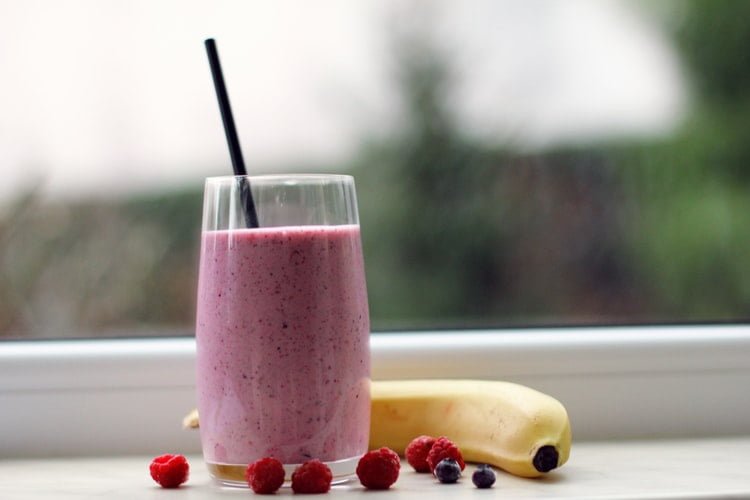Why Do Meal Replacement Shakes Work for Weight Loss?
You’re between meetings and realize you only have 10 minutes for lunch. And 10 minutes isn’t long enough to whip up something healthy or even grab a salad. This can be stressful if you’re trying to lose weight.
The meal replacement shake. These pre-made drinks are easily found in grocery stores, or you can order a case online to keep on hand for situations like this.
But is it wise to regularly rely on Meal Replacement Shakes instead of real food? Here, nutritionists express their true views.

LANDSCAPE SHAKE
Meal replacement shakes come in various flavors. First, there’s the weight-loss type. But newer shakes aren’t just for dieters. Instead, they’re marketed as a time-saver.
In contrast to the past, meal replacement shakes like Huel and Soylent are designed to be a complete meal, says Stephanie Coburn, RD. Although not intended for weight loss, Coburn says many people use them to maintain or lose weight. “They’re also popular with athletes as a pre-or post-workout meal and with anyone short on time.”
There are several reasons why meal replacement shakes are making a comeback, according to Olivia Ashton Brant, RD, Certified Specialist in Sports Dietetics. “First, they are quick and easy, especially in the mornings, when most of us value sleep over cooking breakfast.” A shake is associated with weight loss, even if it isn’t explicitly marketed as such. “I think people automatically associate meal replacement products with weight loss,” Brant says.
HOW HEALTHY ARE MEAL REPLACEMENT SHAKES?
Just because these drinks are associated with weight loss doesn’t mean they’re always a good idea. Dietitians have differing views on these drinks.
On one hand, some nutritionists say these shakes can help you lose weight, especially if you use them instead of processed foods. “Meal replacement shakes are a great alternative to fast food,” Coburn says. “They can also help with serving size and portion control, since we tend to eat more when we’re hungry.”
However, dietitians agree that eating real food is preferable to a meal replacement shake. The key to any weight-loss program is sustainability, according to Julie Miller Jones, PhD, a licensed nutritionist. Jones points out that while many shakes are loaded with vitamins and minerals, they lack phytochemicals and other essential components found in food, as well as fiber.
Drinking a shake is better than skipping a meal, especially for dieters. Those who are skipping meals (usually breakfast) can use meal replacement shakes to get some nutrition and avoid overeating later in the day, says Brant. “We work together to make sure the meal replacement shake is balanced and meets their calorie and macro needs.”
Notably, relying too heavily on shakes — like replacing all meals with shakes — can backfire. “If someone restricts calories too much with shakes, the results are unlikely to last,” Brant says.
A SHAKE ‘S PRODUCTS
3 macronutrients: “Look for a meal replacement shake with carbs, protein, and fat,” Brant advises. Without a balance of these three, you won’t be satisfied with this‘meal’ and will likely compensate by overeating later. This can sabotage weight loss efforts. “
In other words, the best meal replacement drinks mimic the nutrients in a full meal. This would be 300–400 calories, 15–20 grams of protein, 5 grams of fiber, and 10–13 grams of fat, preferably unsaturated. “This combination helps control hunger and appetite,” says Coburn. Look for shakes with less than 5 grams of sugar, advises Linda Nikolakopoulos, RD.
Protein: Shakes should contain protein to help you meet your daily protein requirements. While this varies by shake, a good rule of thumb is that the drink should contain 25–50% of the daily recommended amount of vitamins and minerals.
TIPS AND OTHER OPTIONS
Don’t just shake it.
“Meal replacement shakes” are not meant to replace all meals. The vitamins and minerals they contain are not enough to provide a healthy and balanced diet. They are also low in calories, so using them to replace all meals will likely leave you hungry and tired. “
A meal replacement shake has 300 calories versus 300 calories from real food, says Brant. “Use Meal Replacement Shakes only when necessary. Don’t rely on them to feed your body every day. “
Boost your shake. For a shake under 300 calories, Coburn recommends pairing it with a snack to keep hunger at bay. She advises
- Banana with 2 tbsp of peanut butter or almonds or mixed nuts
- Avocado or hummus on multigrain
- Yogurt with 5-10g protein and fresh fruit
- Carrots with PB or hummus
Opt for meal delivery. This could be a good option for those in a hurry. “Many companies now offer this, and it has become very popular,” Nikolakopoulos says. These services provide prepared meals that can be refrigerated and warmed up when needed.

